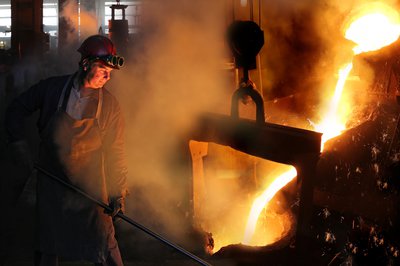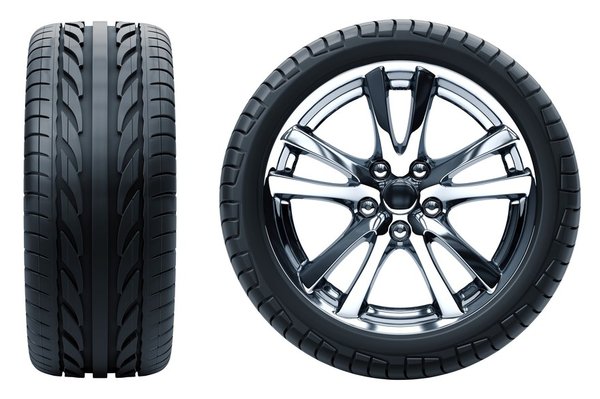Auto parts stocks offer something for every type of investor -- whether you’re an aggressive investor looking to invest in blue-sky technology such as electric vehicles (EVs) and driverless cars, or a risk-averse investor worried about a recession. With that in mind, let’s dive in and take a look at the key stocks in the industry.
Auto parts industry stocks
Looking at matters thematically, there are three overlapping ways to think about investing in the automotive industry:
- Stocks benefitting from the aftermarket and replacement markets.
- Original equipment manufacturer (OEM) parts suppliers and companies that benefit from increased light vehicle production (LVP), which covers automobiles, sport utility vehicles, and light commercial vehicles such as vans.
- Essentially a subset of the first group, many OEM suppliers aim to increase content per vehicle (CPV) through technological development or shift in demand. CPV refers to the value of a company’s products on a vehicle.
Those three bullet point groupings are somewhat arbitrary, and many companies are in two or even all three groups. Still, the model serves as a helpful guide for investing in the automotive and transportation industry.
| Company | Market Capitalization | Key Activity |
|---|---|---|
| LKQ (NASDAQ:LKQ) | $15 billion | Vehicle replacement parts used in the vehicle collision and mechanical replacement market. Has a very small OEM business. |
| Goodyear (NASDAQ:GT) | $4.5 billion | Manufacturer of tires for automobiles, trucks, buses, motorcycles, aircraft, etc. |
| O’Reilly Automotive (NASDAQ:ORLY) | $40.5 billion | Auto parts retailer. |
| Snap-on (NYSE:SNA) | $12 billion | Tools, equipment, and diagnostics for auto professionals. |
| Axalta Coating Systems (NASDAQ:AXTA) | $6.8 billion | High-performance coatings. |
| Aptiv (NYSE:APTV) | $40.7 billion | Vehicle components focused on electrical, electronic, active safety technology, and networking architecture. |
| Autoliv (NYSE:ALV) | $7.6 billion | Passive safety systems such as airbags, seatbelts, and steering wheels. |
| BorgWarner (NYSE:BWA) | $10.3 billion | Propulsion systems and electrification products. |
| Gentex (NASDAQ:GNTX) | $7.4 billion | Dimmable rearview mirrors, digital vision, dimmable glass, mirrors, and electronics. |
LKQ Corporation
LKQ Corporation is a major player in the aftermarket and replacement part market. It's a relatively stable end market because its growth prospects depend on the number of miles driven by light vehicles. More miles driven means more vehicle collisions and more wear and tear -- all good news for LKQ.
The company’s global reach makes it the leading player in North America and Europe. Management plans to use its scale to gain market share by having more car parts inventory available than competitors.
Goodyear
Similarly, tire manufacturer Goodyear tends to generate three-quarters of its unit sales from the replacement market instead of OEM. If you’re going to invest in aftermarket plays, the key is to ensure the company is generating growth through winning market share.
That’s something that Goodyear will do following its acquisition of fellow tire company Cooper. The deal will help build scale and expand profit margins at the leading U.S. tire manufacturer. Ultimately, Goodyear will aim to reach the kind of profit margins enjoyed by market leaders Bridgestone and Michelin.
O’Reilly Automotive
Given the aftermarket size, there are plenty of under-the-radar ways to play the sector. The key metrics to look out for here are miles driven and the average age of the car fleet. As noted above, more miles driven means more cars serviced, and older cars tend to need more servicing.
That's music to the ears of the auto parts retailers such as O'Reilly Automotive, AutoZone (NYSE:AZO), and Advance Auto Parts (NYSE:AAP). They are an exciting and rare collection of stocks because they’re often seen as being recession-proof. The argument is that consumers tend to delay purchasing new cars in recessionary periods in favor of running older vehicles longer.
The best in class is O’Reilly Automotive due to its relatively greater exposure to the higher-growth Do-It-For-Me (DIFM) market. The DIFM is seen as having greater growth potential due to the increasing complexity of automobiles. Moreover, O'Reilly has a better track record of ensuring the timely delivery of parts -- a major plus for the DIFM customer.

Snap-on
Snap-on is a global provider of tools, diagnostics equipment, and information systems to dealerships and auto repair shops. In fact, nearly two-thirds of Snap-on’s sales go to vehicle repair shops and vehicle technicians.
Consequently, demand for Snap-on products tends to be driven by the number of vehicles serviced and the increasingly complex vehicle systems integrated into automobiles. In addition, the rising age of the average U.S. light vehicle is likely to spur ongoing demand for servicing.
Axalta Coating Systems
Another under-the-radar way to participate in the auto parts market is to buy into painting and coating companies. Investors should take a look at Axalta Coating Systems since the automotive market makes up nearly three-quarters of its sales, with the refinish market being its highest-margin activity.
Axalta offers investors a way to benefit from both the aftermarket (refinishing) and OEM market. Moreover, given that cars will need coating whether they’re internal combustion, hybrid, or electric vehicles, Axalta offers a way to profit regardless of the changes in the industry.
Aptiv
The leading U.S.-listed OEM parts players are Magna International (NYSE:MGA), Lear Corporation (NYSE:LEA), Aptiv, BorgWarner, and Autoliv.
The key difference between the OEM and aftermarket stocks is that investors in the OEM suppliers need to follow light vehicle production figures. More production usually means more profit, so car production is the key metric to track.
The OEM market tends to have a small number of customers -- the major car manufacturers -- while the aftermarket has many customers. For example, Aptiv's customers include 23 of the largest 25 automotive OEMs.
As a result, OEM supply contracts are nearly always keenly contested. The suppliers have intimate relationships with manufacturers and stay close to them in terms of production plants and also in terms of product development. Ultimately, the name of the game for OEM suppliers is to win contracts to benefit from increased LVP and to boost CPV.
Aptiv plans to do that by winning out in the driverless car market. The company is the leading provider of the architecture necessary for driverless cars. As such, the stock is a technology play, as well as a way to play rising OEM production.
Autoliv
Autoliv's long-term sales have grown at a mid-single-digit rate, compared to a low-single-digit rate for LVP. The primary growth driver has been the development of safety technology and industry adoption of airbags and seatbelts. The company claims more than 40% of the global market for passive safety, so Autoliv offers investors an opportunity to profit from increasing global car production and an increased awareness of the need for safety in vehicles.
BorgWarner
BorgWarner provides drivetrain and powertrain solutions to the internal combustion engine (ICE) market. However, as car sales and production are increasingly shifting toward hybrids and EVs, BorgWarner is investing in propulsion systems for them and making a slew of acquisitions in the electrification area. For example, BorgWarner bought Delphi Technologies (power electronics) in 2020 to add to its CPV on electric light vehicles.
ICE vehicles won't disappear overnight, so BorgWarner and others still have many years of earnings to generate from the ICE market. Still, the auto OEM suppliers must adjust to the reality of a long-term shift towards hybrid and EVs.
For investors who want some exposure to the automotive OEM market, a diversified industrial conglomerate with substantive automotive and automotive materials might fill the bill. Two names that immediately spring to mind are 3M (NYSE:MMM) and Illinois Tool Works (NYSE:ITW).
Gentex
Investors looking for a relatively safe technology play may like digital vision and dimmable mirror technology company Gentex. The company is the overwhelmingly dominant supplier of automatic-dimming rearview mirrors to the automotive industry, with Magna being a very distant second.
Dimmable mirrors tend to be a premium option on vehicles, and Gentex's management believes it can increase revenue through automakers increasingly adopting them as an option. In addition, Gentex has a growth opportunity through developing sales of its full display mirrors and camera systems as customers increasingly demand advanced technology in automobiles.
A sector to invest in?
The auto parts industry offers something for every investor, ranging from high risk/high reward types of technology plays, through balanced risk options such as Gentex or BorgWarner, all the way to recession-resistant options such as auto parts retailers.
If you have a specific risk preference and/or a strong belief in where the automotive industry is headed, there will be an exciting stock to invest in on this list. If you’re investing in OEM parts stocks, just remember to keep an eye on industry forecasts for LPV and how auto suppliers are planning to increase CPV. For the aftermarket, the key is to follow miles driven and how a company competes within its end markets.
















